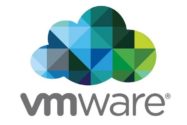SAP Infrastructure
Filter By
Browse By
- SAP Analytics and AI
- SAP Application Development and Integration
- All SAP Application Development and Integration
- SAP ABAP
- SAP ABAP Development Tools
- SAP ABAP Test Cockpit
- SAP API Management
- SAP BAPI
- SAP Basis
- SAP BRF
- SAP Business Application Studio
- SAP CMS
- SAP Design Studio
- SAP Development Tools
- SAP DevOps
- SAP EAI
- SAP EDI
- SAP Extension Suite
- SAP Fiori
- SAP Fiori Elements
- SAP Integration Suite
- SAP Low Code Application Development
- SAP Low Code Automation
- SAP Netweaver
- SAP Release Management
- SAP UI5
- SAP Web Application Server
- SAP Web IDE
- SAP Business Process Management
- SAP Center of Excellence
- SAP CIO
- SAP Customer Experience
- SAP Data and Data Management
- All SAP Data and Data Management
- SAP BW
- SAP BW/4HANA
- SAP Crystal Reporting
- SAP Data Archiving
- SAP Data Center
- SAP Data Governance
- SAP Data Integration
- SAP Data Migration
- SAP Data Quality
- SAP Data Services
- SAP Data Strategy
- SAP Data Visualization
- SAP Data Warehouse Cloud
- SAP DMS
- SAP Document Control
- SAP EIM
- SAP ETL
- SAP ETL Tools
- SAP HANA
- SAP HANA Administration
- SAP HANA Deployment Infrastructure
- SAP HANA Studio
- SAP Master Data
- SAP Master Data Governance
- SAP MDM
- SAP Enterprise Architect
- SAP Enterprise Asset Management
- SAP ERP
- SAP Finance
- All SAP Finance
- SAP Accounting
- SAP AR AP
- SAP Asset Accounting
- SAP Billing Systems
- SAP BPC
- SAP BRIM
- SAP Cash Management
- SAP Central Finance
- SAP Controlling
- SAP COPA
- SAP Cost Center Accounting
- SAP e-invoicing
- SAP FICO
- SAP Finance Automation
- SAP Financial Closing Cockpit
- SAP Financial Consolidation
- SAP Financial Planning
- SAP FX Risk
- SAP General Ledger
- SAP Global Tax Management
- SAP Hyperion
- SAP Order to Cash
- SAP Payment Processing
- SAP Profitability Analysis
- SAP Rebate Management
- SAP S/4HANA Finance
- SAP Universal Journal
- SAP Governance Risk and Compliance
- SAP Human Capital Management
- SAP Intelligent Technologies
- SAP Platform and Technology
- All SAP Platform and Technology
- SAP Business Technology Platform
- SAP Cloud Connector
- SAP Cloud Integration Platform
- SAP Cloud Migration
- SAP Cloud Platform
- SAP Cloud Providers
- SAP Cloud Strategy
- SAP Container Platform
- SAP Digital Asset Management
- SAP Digital Integration Hub
- SAP Digital Signature
- SAP HANA Enterprise Cloud
- SAP HEC
- SAP Hyperscalers
- SAP Infrastructure
- SAP Messaging
- SAP Smart Forms
- SAP Quality and Testing
- SAP Security
- SAP Spend Management
- SAP Supply Chain Management
- All SAP Supply Chain Management
- SAP APO
- SAP Asset Management
- SAP Business Network
- SAP Digital Manufacturing Cloud
- SAP Digital Twin
- SAP EWM
- SAP IBP
- SAP Inventory Management
- SAP Label Printing
- SAP Logistics
- SAP Manufacturing
- SAP Manufacturing Automation
- SAP MES
- SAP MII
- SAP MM
- SAP MRO
- SAP MRP
- SAP Order Management
- SAP Plant Maintenance
- SAP PLM
- SAP Production Planning
- SAP S&OP
- SAP SD
- SAP SPM
- SAP Supply Chain Planning
- SAP Track and Trace
- SAP Transportation Management
- SAP System Administration
What is SAP Infrastructure?
Rapidly evolving from historical on-premise servers to private, public, and hybrid cloud and cloud-like environments, SAP infrastructure includes the systems, hardware, and platforms on which SAP systems and applications are run. Originally, SAP Infrastructure was limited to mainframe computers, though that changed with the client/server architecture included in the SAP R/3 release. While client environments have typically been Microsoft Windows-based systems, host environments normally included Unix systems. Over time, this shifted to include servers running Linux operating systems, though these were still located in data centers local to an organization’s physical locations.
What is SAP Infrastructure?
Rapidly evolving from historical on-premise servers to private, public, and hybrid cloud and cloud-like environments, SAP infrastructure includes the systems, hardware, and platforms on which SAP systems and applications are run. Originally, SAP Infrastructure was limited to mainframe computers, though that changed with the client/server architecture included in the SAP R/3 release. While client environments have typically been Microsoft Windows-based systems, host environments normally included Unix systems. Over time, this shifted to include servers running Linux operating systems, though these were still located in data centers local to an organization’s physical locations.
SAP Infrastructure now includes on-premise or local data centers, private cloud environments or hosting partners, public cloud and managed service providers, and hybrid combinations of these environments. SAP’s transition to a cloud-based company has resulted in a rapidly growing number of solutions and offerings being entirely cloud based, which in turn means that more SAP workloads are moving to the cloud. While these are not always public cloud or hyperscale environments, the infrastructure supporting SAP systems is more cloud based each year.
Organizations offering SAP Infrastructure solutions include: Atos, AWS, Dell Technologies, Google Cloud, HPE, IBM, Lenovo, Microsoft, Navisite, NTT Data, Nutanix, Rackspace Technology, Virtustream, and VMware.
Key Considerations for SAPinsiders:
- SAP Infrastructure continues to move towards the cloud, but SAP S/4HANA remains top of mind when it comes to infrastructure planning. As organizations make plans for the future, they need to determine what their future infrastructure should be. For many this revolves around SAP S/4HANA, while others are simply looking to eliminate older legacy infrastructure by doing a lift and shift to the cloud. This panel discusses what the priorities for organizations have been for SAP Infrastructure, where SAP S/4HANA plays into the picture, what technologies are areas of investment, and what impact RISE with SAP is having.
- SAP workloads, and the infrastructure that they are running on, are moving to the cloud. Based on research conducted by SAPinsider, 88% of organizations are running at least some SAP workloads in the cloud. While this isn’t every system, most of those who are still running workloads in on-premise infrastructure say that they plan on moving those systems to the cloud within the next two years. This article covers which workloads are still running on local infrastructure, which are most likely to be running in the cloud, and what approach organizations are taking when it comes to moving those workloads.
37 results
-

Value as a Service: Embracing the Coming Disruption
Reading time: 5 mins
As companies are shifting to a Value as a Service (VaaS) model, the focus becomes less on the delivery model and more on the value delivered. Effectively delivering VaaS requires a partnership between vendors and customers, one that is outcome-based, rather than a negotiated, transactional exchange of goods and services for money – and where…
-

Using Hyperconvergence to Simplify SAP Infrastructure
Reading time: 4 mins
As enterprise infrastructures become more complicated by mixtures of on-premise, cloud, and hybrid technologies, simplicity is becoming more important. An emerging need is for an enterprise cloud built on “hyperconverged” infrastructure, one in which a variety of technologies, including virtualized solutions, can be accessed from a single point. Find out how a simplified hyperconverged environment…
-

What is Your Company’s Readiness to Innovate with a Digital Framework?
Reading time: 1 mins
SAP customers are eagerly keeping an eye on the many new technologies and trends that are disrupting business processes, business models, and in some cases even entire industries. Big data, machine learning, IoT, predictive analytics, on-demand manufacturing, and cloud are changing the business landscape, and companies are trying to determine how these trends will impact…
-
-

Running SAP on the IBM BlueMix Infrastructure Platform: Live Q&A on IaaS Deployment Options
Reading time: 29 mins
IBM offers SAP certified cloud infrastructure available in multiple locations globally with a choice for clients to choose a self service / IaaS model or fully managed by IBM on the BlueMix platform. IBM’s bare metal servers on BlueMix provide the best performance for SAP and HANA applications while allowing the capability to leverage Watson…...…
-

Modernize Your SAP Landscape
Reading time: 1 mins
SAPinsider Events has released a second online video series: Modernize your SAP Landscape that was recorded at a series of live events produced by SAPinsider Events and sponsors SAP, SUSE, VMware, HPE, and Intel. This exclusive sequence explores the changing SAP solution landscape and the limitations of traditional client-server architecture to handle new software capabilities…
-

SAP Landscape Transformation: Weighing the Options
This is part 2 of a 5-part series of presentations hosted by SAPinsider and sponsored by SUSE, VMware, SAP, HPE, and Intel Mike Nelson delves into the various technologies available to help you transform your SAP landscape. Compare and contrast the tradeoffs of a variety of infrastructure modernizations. This presentation was presented live at the…...…
-

Live Q&A: How to simplify your SAP landscape with new ECM solution options
Reading time: 27 mins
Finance organizations in every industry are looking at re-thinking long-standing processes and business models to compete in a dynamic, connected world in which a traditional 30-day close no longer passes muster. A static finance function is too slow and too rigid to stay on top of constant innovations in cloud, mobile, social, big data, and…
Featured Insiders
-

Joerg Boeke
SAP BW / HANA Solution Architect, Manging PArtner BIAnalyst Gmbh & Co. KG
-

Laz Uriza
Business & Sales Strategy Director - WW SAP on Azure Strategy Lead
Global Sales & Strategy Lead, Microsoft
-

Sherry Yu
Global Alliance Director - SAP Success Architect, SUSE
Become a Member
Unlimited access to thousands of resources for SAP-specific expertise that can only be found here.
Upcoming Events
-

Register Now: SAPinsider Technovation Summit Barcelona: AI + SAP BTP
May 14 - 15, 2024
Barcelona, Spain
View Event
Related Vendors
Your request has been successfully sent

